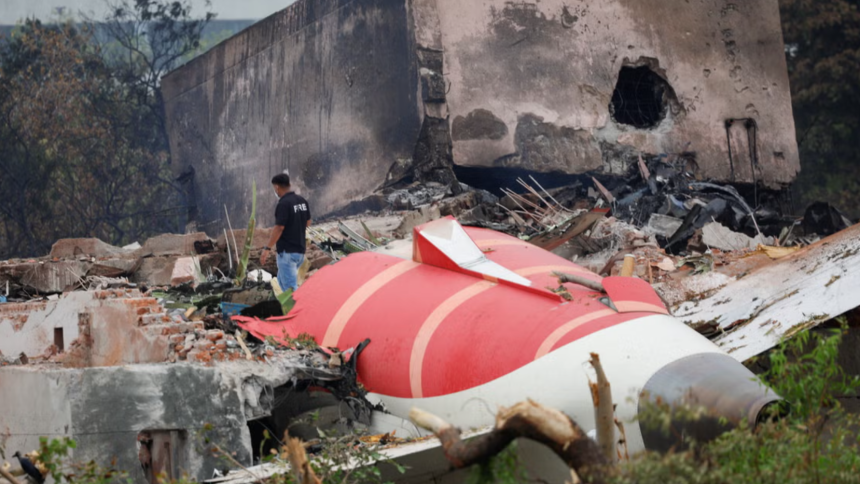Fuel Switches Blamed for Dual Engine Power Loss
India’s Aircraft Accident Investigation Bureau (AAIB) revealed in its preliminary report that both fuel control switches on the Boeing 787 were manipulated—shifting from RUN to CUTOFF—just 3–4 seconds after takeoff from Ahmedabad, leading to a rapid dual-engine shutdown. Although the switches were later returned to RUN, one engine had already failed to revive, causing the tragic crash that killed 260 people (241 onboard and 19 on the ground).
Cockpit Confusion Captured on Voice Recorder
Cockpit voice recorder transcripts indicate severe disorientation: one pilot asked, “Why did he cut off?” and the other replied, “I did not do so.” The report emphasizes the uncertainty over who—if anyone—triggered the fuel cutoff.
Mechanical Safeguards Under Scrutiny
Boeing-designed fuel cutoff switches include a locking mechanism requiring a pull-up motion before activation. A 2018 FAA bulletin highlighted that some had been installed without these locks—but the AAIB noted Air India did not carry out even voluntary inspections.
Potential Human Error vs. System Fault
Investigators have not assigned blame. They outline possible causes: inadvertent pilot movement, switch malfunction, or deeper technical flaws. Aviation experts and pilot bodies caution against premature conclusions—stressing both pilots were experienced and well-trained.
Other Factors Ruled Out
Key observations from the crash:
- Aircraft configured correctly: flaps at takeoff 5°, landing gear up, no bird strike.
- The Ram Air Turbine deployed properly to provide emergency power.
- No external impact detected; fuel quality was verified post-crash .
Families Demand Clearer Answers
Relatives of victims criticized the report as “ambiguous,” accusing investigators of skirting vital details. They have called for greater transparency, questioning whether lock designs, cockpit safeguards, or even pilot intent were thoroughly assessed.
Next Steps in the Investigation
- Black box data continues to undergo granular analysis.
- The final report, expected in 12 months, will probe:
- Design and reliability of fuel switch mechanisms
- Pilot training and cockpit protocols
- Any potential mechanical or software anomalies
- International aviation bodies—including India’s DGCA, the U.S. NTSB, Boeing, and GE—are participating in the ongoing inquiry.
Final Word
This preliminary report provides critical early insight into one of the deadliest aviation disasters in a decade, centering on the unexplained shutdown of fuel to both engines. Although the investigation refrains from assigning fault, it raises pressing questions about cockpit safety mechanisms and human factors. With public demand for accountability rising, authorities face mounting pressure to deliver clear, comprehensive answers—and actionable safety improvements.











